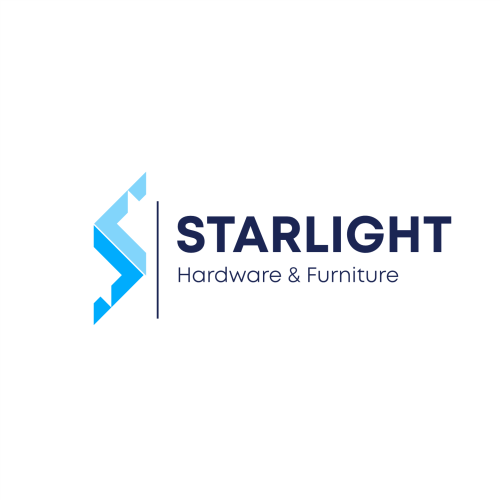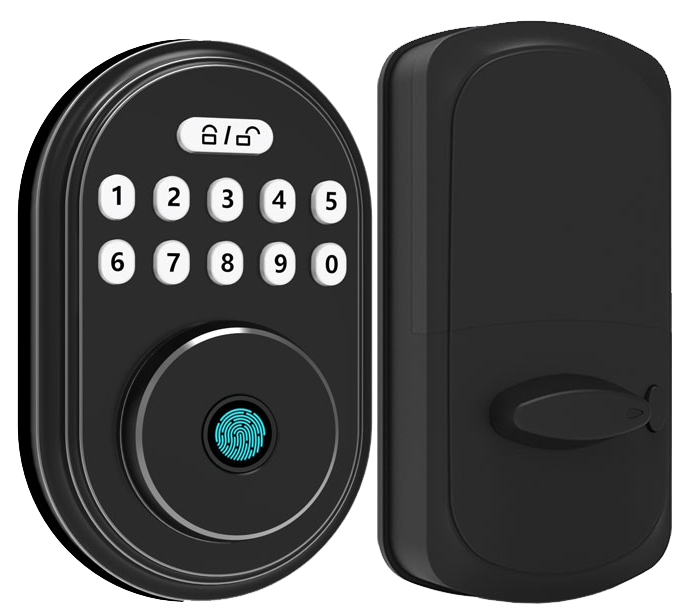Ever worry your front door key could fail you when it counts? You’re not alone. At Starlight Hardware, we spend six months on every smart lock. Solid.
And it’s not just tough. It also responds to your finger or your phone. Picture the smooth metal faceplate shining a soft LED glow. Then a biometric fingerprint sensor (a reader that checks your unique fingertip pattern) greets you home.
Want to know a secret? Our five custom locks started as sketches on a whiteboard. Oops, let me rephrase that, they began as rough doodles. But each one earns CE certification (a safety badge recognized across Europe).
Now they stand guard on your door, built for life’s chaos and your busy schedule. Exactly. You get high security and easy entry, all in one sleek package.
5 Reliable, Customizable Smart Locks Ensure Home Safety
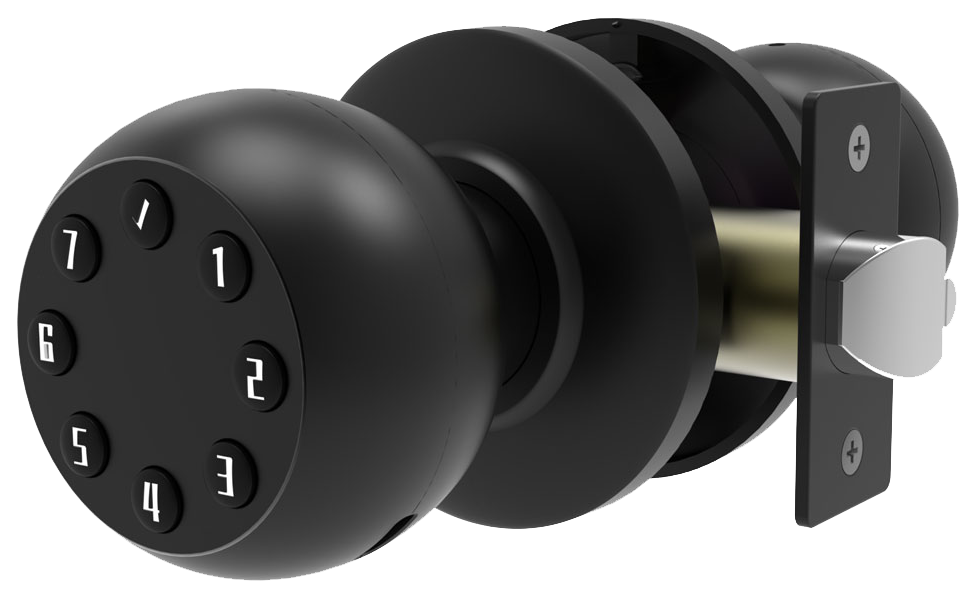
Over six months, we take you from idea to a lock on your door.
It kicks off with brainstorming sessions and user workshops, think of it like a coffee chat about your next lock.
Then we shape the hardware and software together.
You’ll imagine the smooth metal faceplate, hear the reassuring click, and see a soft LED glow guiding you.
Rapid prototyping comes next. We CNC-machine parts and do low-volume injection molding in our smart lock manufacturer China factory.
We slot in the Bluetooth Low Energy (BLE) chip and Wi-Fi module, then seal it in an IP65-rated housing (dust- and water-resistant).
For hardware, alpha units use PLA (a common plastic) and ABS shells just to test the fit.
Beta versions switch to polycarbonate (PC) and nylon so they can handle 10,000 latch cycles and tamper-sensor checks.
On the firmware side, an ARM Cortex-M microcontroller (MCU) boots with RSA-2048 signature checks, while AES-256 encryption locks down your PIN.
Wi-Fi uses TLS 1.3 over MQTT to chat securely with AWS IoT.
Quality assurance pushes each lock to its limits.
We freeze them at –20 °C, then roast them at 60 °C. Soak them in 95% humidity. Hit them with 500 G shocks and MIL-STD-810G vibration.
Mean time between failures tops 100,000 cycles. Defect rate stays under 0.1%.
Every month, we sprint through fresh feedback to refine design, firmware, and production.
- Concept ideation and user research
- Hardware/software co-design
- Alpha-to-beta prototyping with CNC machining and injection molding
- BLE/Wi-Fi firmware integration and encryption
- Environmental stress and reliability validation
Ideation and Smart Lock Design Process at Starlight Hardware

In early 2023 we kicked off a three month ideation phase. Engineers, UX designers, and product managers gathered around doodle-covered whiteboards. Coffee in hand. We brainstormed fast, catching every spark.
Then we ran FMEA (failure mode and effects analysis) workshops to spot weak spots before a prototype ever hit the table. Think of it like checking your house for leaks before a storm. Two-week sprint cycles kept our energy high and kept risks front and center. Solid.
Next, user research steered every move. Surveys and chats showed people wanted three ways to unlock: punching in a code on a PIN-pad (a grid of numbered buttons that gives a satisfying click), swiping a finger over a biometric fingerprint sensor (a reader that checks your unique fingertip pattern), or tapping to open via mobile app. Guests needed temporary codes. Property managers asked for an emergency key override. No surprises.
In just two sprints we sketched three ideas. Then we tested one design in focus groups to fine tune how it looked and felt. Back to our smart lock…
- Kickoff ideation and stakeholder alignment
- FMEA risk analysis and mitigation planning
- Concept sketching and low fidelity mockups
- Focus group validation and feedback incorporation
Hardware Prototyping Techniques for Reliable Smart Locks
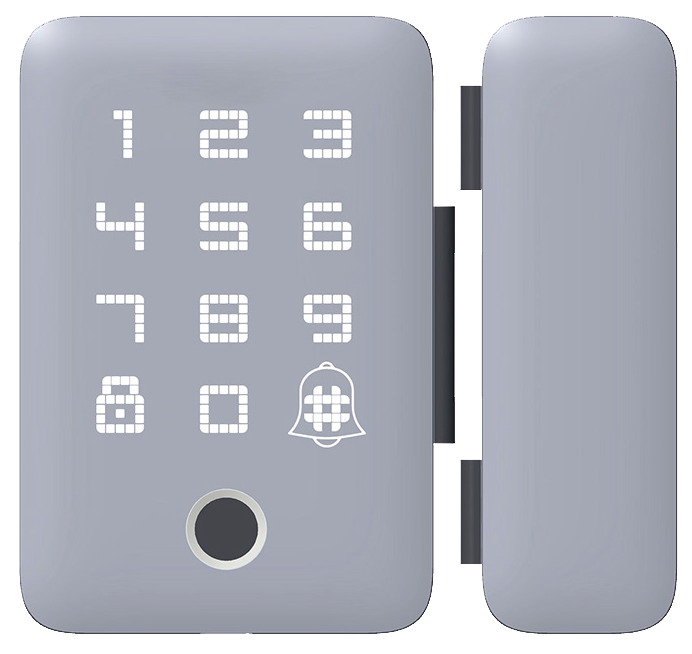
Rapid proof-of-concept
We print 3D models to fine-tune the smooth metal faceplate (the part you touch) and check latch alignment in minutes. Then we CNC-machine deadbolts (precision-milled locking bolts) so they fit tight with almost no play. Every alpha build gets CE and FCC compliance checks early on. That way, we catch fit issues before they slow us down.
Beta-phase molding
Next, we mold low-volume cases from polycarbonate and nylon. These plastics feel sturdy in your hand. We run 10,000 latch cycles, like pressing a crisp PIN-pad over and over, to test durability and our built-in tamper detection (a sensor that flags forced entry) plus door-position sensors (that tell you if the door’s open). We also validate the HVPAK motor driver (a tiny power-control chip) to make sure it sips juice, not slurps it.
Gamma-stage trials
At this point, our final plastics and metals face real-world extremes. We bake them in high humidity, freeze them in low temps, and blast them with UV light. Then we wrap up with full certification checks before rolling into production. Solid!
Iteration cycles
Each prototype goes through one or two sprint cycles. We bench-test, gather feedback, tweak the design, swap materials, and test again until we’re confident it’s reliable. Hmm, that reminds me, I once saw a latch pop open during a test. Back to the drawing-board we went, and we fixed it.
Firmware Engineering and IoT Security in Smart Locks
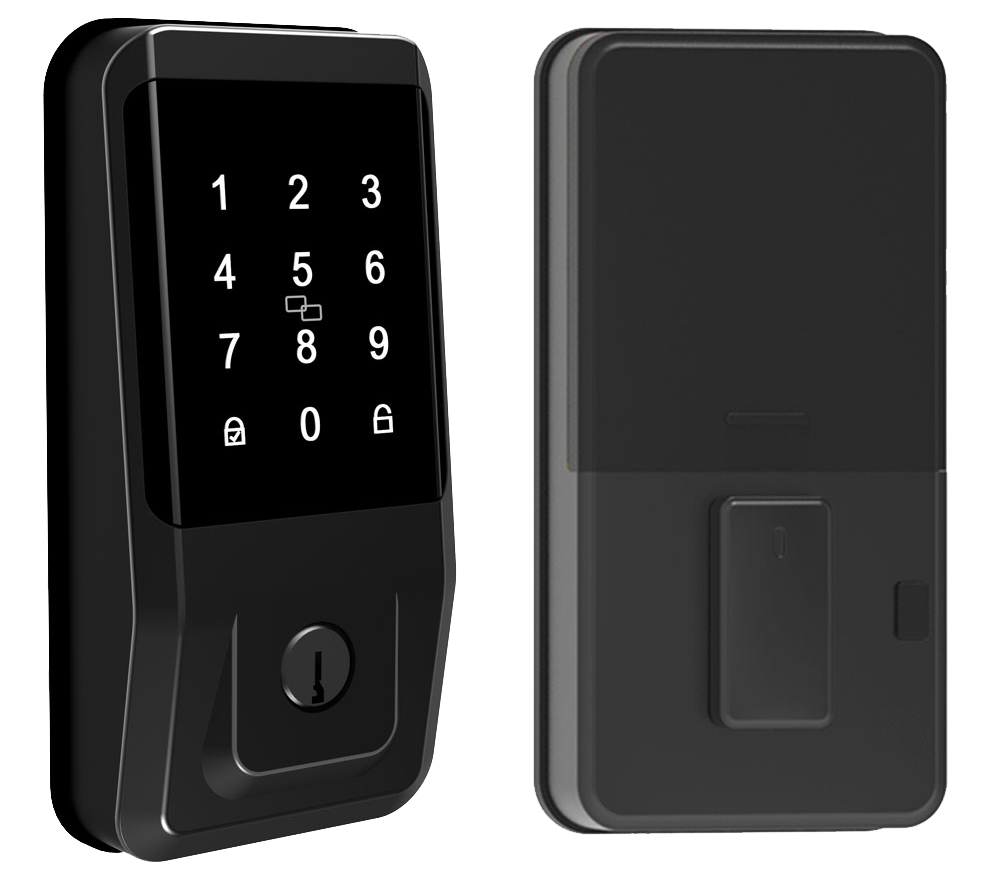
We run our ARM Cortex-M with a secure bootloader that checks every update using RSA-2048 signature (it verifies code authenticity). Data resting on the device is protected by AES-256 encryption (it scrambles data at all times). We connect to AWS IoT over MQTT with TLS 1.3 (think of it as a locked tunnel for messages).
When we send firmware updates over the air (OTA), they ride that same secure tunnel. If an update goes wrong, our auto rollback feature snaps back to the last safe version without a service call. It’s like a safety net under a tightrope. Solid.
Every quarter, we bring in ethical hackers for penetration tests (they try to poke holes). We patch found issues fast, then test again. That routine keeps our locks several steps ahead of real threats.
We’ve built and refined this over 20 years and earned CE certification through rigorous testing. That means you get proven reliability and peace of mind.
Features at a glance:
- Secure bootloader with RSA-2048 signature checks
- AES-256 encryption for on-device data
- TLS 1.3 over MQTT to AWS IoT
- Encrypted OTA updates with auto rollback
- Quarterly penetration tests and vulnerability assessments
Quality Assurance and Environmental Testing for Durable Smart Locks
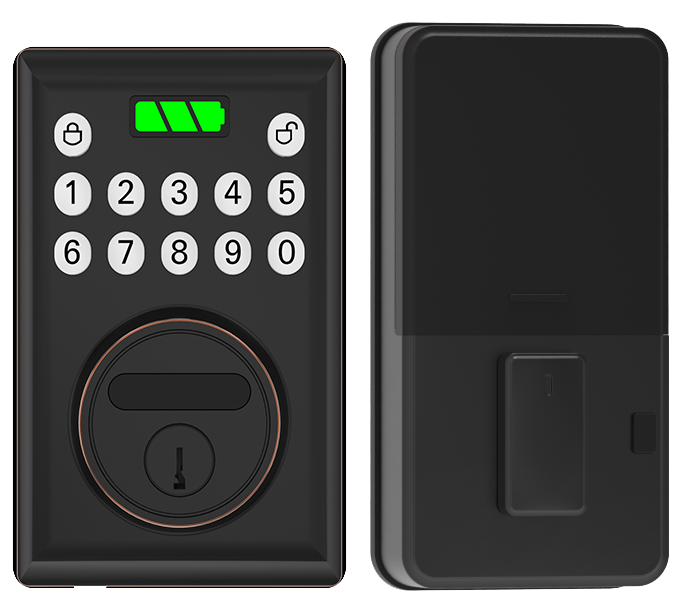
Every Starlight smart lock goes through a set of tough tests that pack years of daily use into just a few days. You’ll hear the reassuring click, feel that smooth metal faceplate, and see a soft LED glow long before it ever reaches your door. We catch weak seals and brittle latches well in advance.
Here’s how we push each lock to its limits:
- Accelerated aging at 200,000 cycles (lock and unlock actions) to spot wear patterns
- Temperature swings from -20 °C to 60 °C (extreme cold to baking heat)
- 95% humidity soak (moisture exposure) for foggy mornings or steamy nights
- Shock test up to 500 G (sudden impacts) and MIL-STD-810G vibration tests (rough handling)
- Salt-spray corrosion chamber using ASTM B117 (sea-air simulation)
- End-of-line checks for electrical and mechanical function with defect rates under 0.1%
These tests push Starlight locks to double the industry standard cycle life. Typical commercial locks quit around 100,000 cycles and hover near a 1% defect rate. Our locks clear 200,000 cycles with defects below 0.1%. Solid.
We’ve tested these locks in sandy deserts and snowy peaks.
We’ve also earned IP65 water-resistance certification, so it keeps clicking rain or shine.
Customization Options and User Interface Design in Smart Lock Development

At Starlight we see the lock’s smooth metal faceplate as a piece of fine hardware. You can pick a matte black finish, satin nickel, or oil-rubbed bronze. Our capacitive touchscreen (a smooth glass pad with haptic feedback (a gentle buzz)) gives a crisp tap each time. Imagine tapping it like your favorite phone screen.
Ergonomic curves guide your finger to each number. And the soft LED glow around the pad lets you match the look to your door trim or room décor.
Behind that glass pad you get flexible entry and a clear admin dashboard. Type a PIN code on the pad. Scan a fingerprint (a reader that checks your unique fingertip pattern). Tap an RFID card. Or use mobile Bluetooth Low Energy (a low-power wireless connection) right from your phone. Need guest access? Set one-time or scheduled PINs in seconds in the dashboard. And for extra peace of mind you have an emergency mechanical key hidden under the faceplate.
Every menu and button follows Apple Human Interface Guidelines and Google Material Design standards so it feels familiar and easy. We’ve tested this design for years – it’s solid.
Over 10,000 locks installed worldwide.
| Feature | Options |
|---|---|
| Exterior finish | Matte black, satin nickel, oil-rubbed bronze |
| Backlight color | Multiple LED options |
| Haptic feedback | Adjustable buzz intensity |
| Guest codes | One-time or scheduled PINs |
| Dashboard theme | Customizable UI themes |
Smart Home Integration and Mobile App Connectivity for Smart Locks
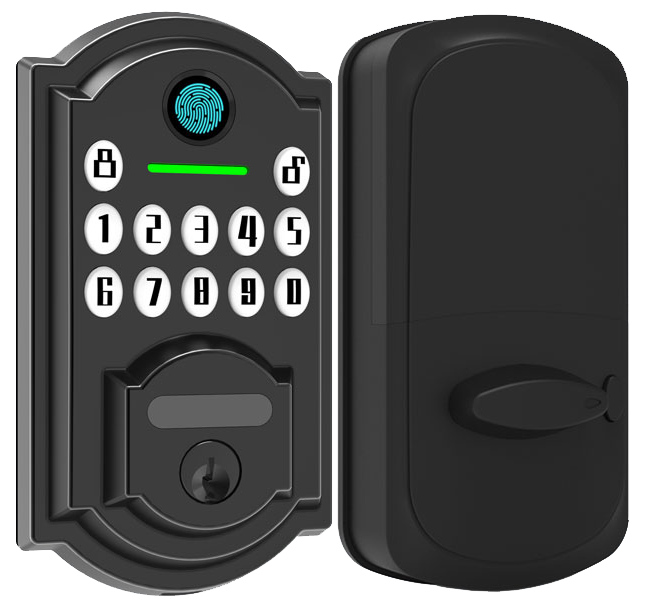
Our Starlight mobile app runs on React Native (a cross-platform app framework). It walks you through BLE provisioning (Bluetooth Low Energy setup), like pairing your earbuds, so the lock connects over that low-power wireless link. Next you tap through Wi-Fi setup to join your home network.
Behind the scenes, AWS IoT (Amazon Web Services Internet of Things) handles live push alerts, like battery low or door ajar. It logs every action and sends secure, encrypted lock or unlock commands. Firmware updates roll in over the air, keeping features fresh without extra tools.
Our locks slip right into your favorite smart home setups. You can add a SmartThings or Apple HomeKit routine to lock your door at bedtime. Want voice control? Just say “Alexa, lock front door” with Amazon Alexa or ask Google Assistant.
You can even use door closure to trigger scenes, like softly dimming lights or arming sensors. Set timed routines too, like unlocking as you pull into the driveway or locking up when you head off to work. It’s as effortless as asking a neighbor for a hand.
We also offer developers a public RESTful API (an interface for building web services) and an SDK (software development kit) so you can craft custom dashboards or business integrations. Partner teams have used these tools to pull door status, push access codes, or build usage reports.
In the first quarter of 2024, over 5,000 beta testers ran the API, tried sample code, and shared notes on connection reliability. That feedback helped us sharpen our API docs and streamline over-the-air updates. The end result is a rock-solid ecosystem for any smart access control project.
| Connectivity Method | Supported Platforms |
|---|---|
| BLE provisioning | React Native app |
| Wi-Fi setup | AWS IoT backend |
| Home automation | SmartThings, Apple HomeKit |
| Voice control | Amazon Alexa, Google Assistant |
| RESTful API | Public SDK |
Supply Chain Management and Certification for Smart Lock Production
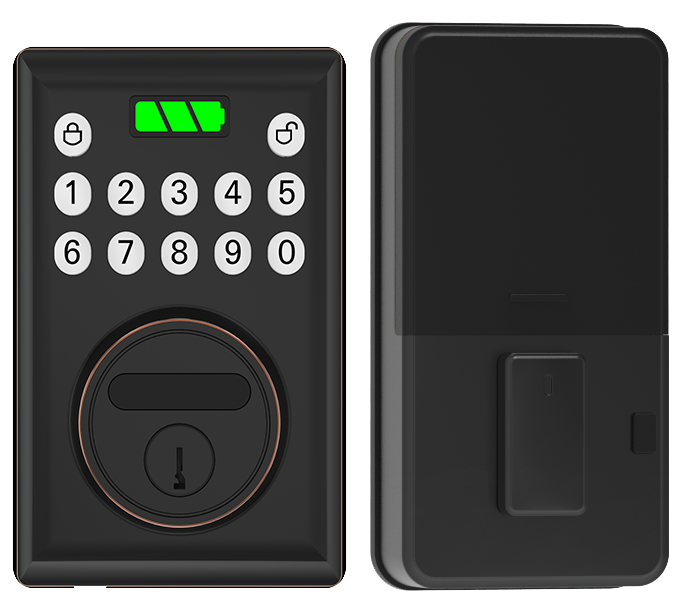
Starlight’s factory taps into a global network for printed circuit boards (PCBs), motors, and sensors. We also handle injection molding (making the smooth plastic shell) and CNC machining on site. Parts arrive every morning, moving along a production line that can crank out up to 5,000 locks per day.
Every piece wears a barcode so we can trace it from supplier to assembly to the final box. Our plastic shells get a date stamp right after they pop out of the mold. If a batch shows a glitch, we can pinpoint the exact supplier lot and hold it for review.
It takes about eight weeks from final assembly to shipping. During that time, we send out weekly status reports and stage orders in local warehouses. Once quality control (QC) gives a thumbs-up, we tuck each lock into a recycled corrugated box and line them up for ocean or air freight.
While locks roll off the line, our certification team works in parallel. We kick off with UL 294 (access control equipment safety) to test electrical safety and durability. Next up is FCC Part 15 (radio frequency compliance) to keep wireless signals within safe limits.
After that, we check CE RED (radio equipment directive) and EU RoHS (restriction of hazardous substances). We also meet EU REACH (chemical safety) by tracking every shipment’s compliance papers in our order management system. And every six months, a third-party audit stops by to make sure we still hold every approval.
- UL 294 (access control equipment safety)
- FCC Part 15 (radio frequency compliance)
- CE RED (radio equipment directive)
- EU RoHS (restriction of hazardous substances)
Continuous Improvement and Future Roadmap for Starlight Smart Locks
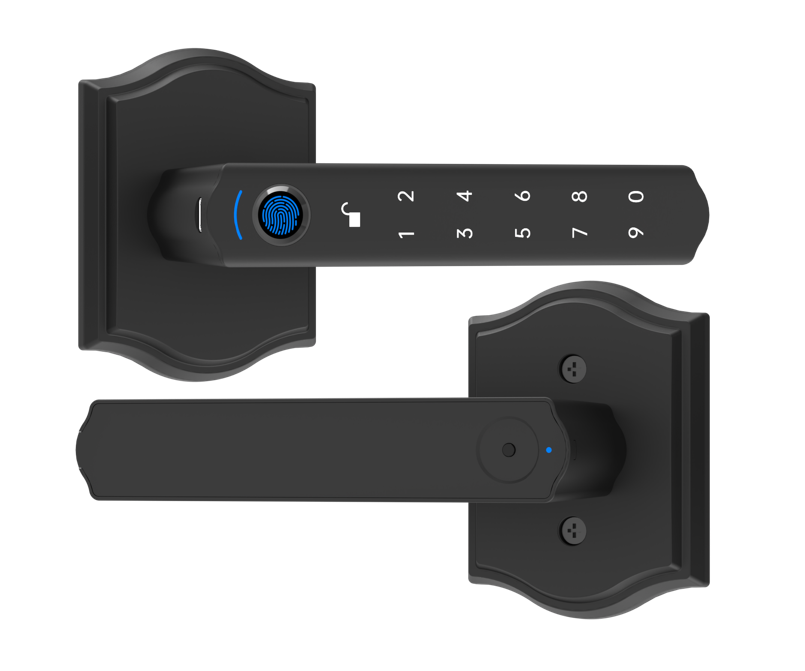
At Starlight, we run agile 4-week sprint cycles (a short project window). Every month, we check in with over 500 beta testers (people trying our locks early). We gather notes on battery life, app flow, and sensor accuracy (how often our sensors read right). Then we roll those tweaks into the next sprint.
This steady cycle helps us catch small glitches before they grow. It also makes sure our product roadmap matches what real users need. We adjust our priorities each month so our locks stay fresh and rock solid.
Want to know what’s next? Here’s our roadmap:
- LoRaWAN support for long-range, low-power connections.
- Built-in camera module for on-device video monitoring (see live feed right at the lock).
- Thread and MQTT protocols for seamless smart home links (they let devices talk easily).
- 15% power consumption cut across all models so batteries last longer.
- Pilot launch of an integrated video doorbell in Q3 2024.
Final Words
In the action, we traced Starlight’s six-month roadmap from ideation sprints to firmware security.
We covered hardware prototyping, QA milestones and end-to-end hotel integration, all built for frictionless guest access and fewer unauthorized incidents.
Our global supply chain and agile cycles keep every lock CE certified and ready for today’s demands and tomorrow’s innovations.
Behind the Scenes: How We Develop Reliable, Customizable Smart Locks shows our commitment to quality and leaves you looking forward to what comes next.
FAQ
Who makes the most reliable smart lock?
The most reliable smart lock comes from Starlight Hardware and other top manufacturers. They combine AES-256 encryption, IP65-rated metal cases, and over 100,000 cycle testing for consistent performance.
What is the future of smart locks?
The future of smart locks will feature LoRaWAN support, built-in cameras, Thread protocols, and lower power usage for smarter, more connected security in homes and businesses.
How to create a smart lock?
Creating a smart lock involves concept ideation, hardware/software co-design, CNC machining prototypes, firmware integration with BLE/Wi-Fi modules, AES-256 encryption, and rigorous six-month testing cycles.
Is a smart lock reliable?
Smart locks are reliable when they feature AES-256 encryption, IP65-rated cases, mean time between failures above 100,000 cycles, and regular firmware updates to address new threats.
